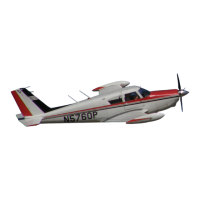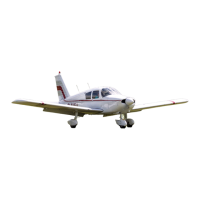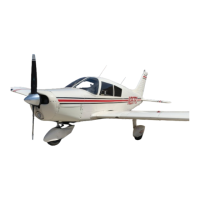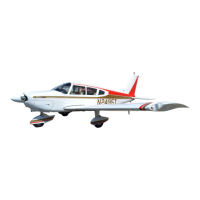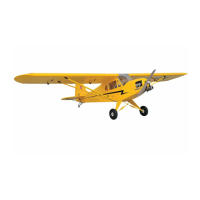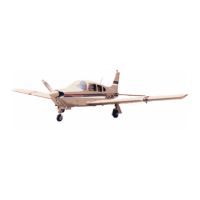PIPER COMANCHE SERVICE MANUAL
04/01/09 XI - INSTRUMENTS
3F17
SECTION XI
INSTRUMENTS
11-1. Description.
The instrumentation in the Comanche is designed to give a quick and actual indication of the attitude,
performance and condition of the airplane. The instrument panel has been arranged to accommodate all
the advanced flight instruments on the left side in front of the pilot and required engine and
miscellaneous instruments on the right side. The instruments are divided into four groups Vacuum, Pitot-
Static, Electrical and Miscellaneous. Some of the instruments are components of indicating systems that
indicate conditions at remote parts of the airplane. A few of the instruments, however, are self-contained
and merely have to be correctly installed to give an indication. Instruments requiring power from the
electrical system are provided with circuit breakers to isolate the individual systems in the event of
trouble.
11-2. Instruments.
11-3. Vacuum-Gyro Instruments.
The directional gyro is a flight instrument incorporating an air driven gyro stabilized in the vertical
plane. The gyro is rotated at a high rate of speed by lowering the pressure in the air tight case and
simultaneously allowing atmospheric air pressure to enter the instrument against the gyro buckets. Due
to gyroscopic inertia, the spin axis continues to point in the same direction even though the aircraft yaws
to the right or left. This relative motion between the gyro and the instrument case is shown on the
instrument dial which is similar to a compass card. The dial, when set to agree with the airplane
magnetic compass, provides a positive indication free from swing and turning error
The gyro horizon is essentially an air driven gyroscope rotating in a horizontal plane and is operated by
the same principal as the directional gyro. Due to the gyroscopic inertia, the spin axis continues to point
in the vertical direction, providing a constant visual reference to the attitude of the airplane relative to
pitch and roll axis. A bar across the face of the indicator represents the horizon. A miniature adjustable
airplane is mounted to the case and aligning the miniature airplane to the horizon bar simulates the
alignment of the airplane to the actual horizon. Any deviation simulates the deviation of the airplane
from the true horizon. The gyro horizon is marked for different degrees of bank.
The suction gauge, a part of the airplanes vacuum system, is mounted in the right side of the instrument
panel. This gauge is calibrated in inches of mercury and indicates the amount of vacuum created by the
engine driven vacuum pump.
11-4. Pitot-Static Instruments.
The airspeed indicator provides a means of indicating the speed of the airplane passing through the air.
The airspeed indication is the differential pressure reading between pitot air pressure and static air
pressure. This instrument has the diaphragm vented to the pitot air source and the case is vented to the
static air system. As the airplane increases speed, the pitot air pressure increases, causing the diaphragm
to expand. A mechanical linkage picks up this motion and moves the instrument pointer to the indicator
speed. The instrument dial is calibrated in knots and miles per hour, and also has the necessary operating
range markings for safe operation of the airplane.

